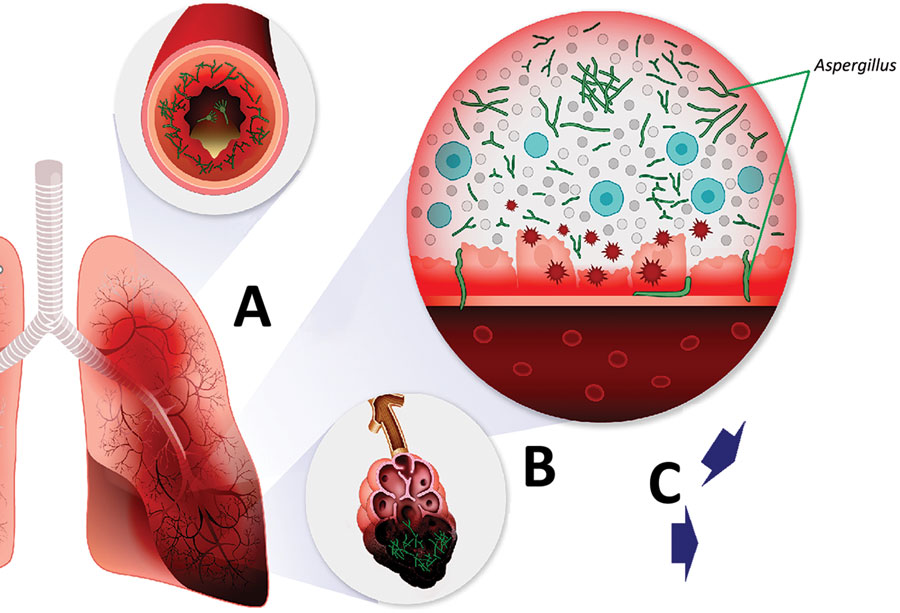Volume 27, Number 1—January 2021
Synopsis
Aspergillosis Complicating Severe Coronavirus Disease
Figure 3

Figure 3. Schematic of coronavirus disease–associated pulmonary aspergillosis. Aspergillus conidia in airway are cleared poorly because of ≥1 defects in primary pulmonary immunity or secondary defenses, enabling conidial germination into hyphal morphotypes, which elicit increased inflammatory responses in the airway and potential invasion into the lungs. A mixed constellation of inflammatory to invasive airway disease, and invasive pulmonary aspergillosis leads to multiple manifestations, including tracheobronchitis and obstructive pneumonia, and complications of invasive fungal pneumonia (nodules, necrosis with cavities, pleural invasion). A) Airways. Aspergillus overgrowth causes pathologic airway inflammation and excess mucous production. B) Alveoli. Hyphal growth causes invasive pneumonia. C) Invasive aspergillosis tracheobronchitis postobstructive bacterial pneumonia.